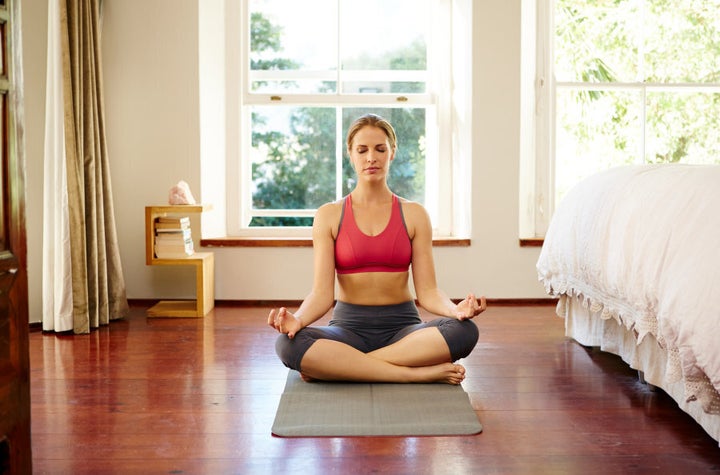There's a documentary on Netflix right now called Happy, in which the subject of happiness is thoroughly explored.
In it, the practise of compassion meditation is discussed, as it's been proven that compassion meditation (otherwise referred to as loving/kindness meditation) is the most effective if happiness is the desired result of your meditating.
"This is one of my favourite meditations," Rita Young, meditation teacher at Sydney Mindfulness Training told The Huffington Post Australia.
In my classes I ask participants to think of one thing they don't like about themselves. In less than three seconds, without exception, everyone has something.
"It really is a balance to create feelings of self-acceptance and love for self, and others, because we seem to be programmed toward self-criticism, and in some cases all the way to self hate. Generally speaking, most, if not all of us, are incredibly self critical. We tell ourselves we're not smart enough, not pretty enough, not strong enough, not rich enough -- it goes on and on."
Young reveals that she sees this type of personal criticism in her classes all the time.
"In my classes I ask participants to think of one thing they don't like about themselves. In less than three seconds, without exception, everyone has something. I joke with them that they are Gold Medal Olympians in self-criticism. But the truth is we practice these criticisms consciously or unconsciously all the time, perhaps every day, maybe every five minutes. Like developing muscles in a gym that you can see, these neural pathways get stronger and stronger until we believe them to be the truth."
That's where compassion, or loving/kindness meditation can help.
This type of meditation is a lovely way to begin to address that. Also, when loving-kindness practice matures, the feelings of love and kindness for yourself flows naturally into compassion for others. For a lot of us this last bit can take some time, especially if we are having a lot of trouble with a particular person but it's a great way to begin with," Young said.
So, what does this type of mediation look like?
"The practice always begins with developing a loving acceptance of yourself. Remember, this is a practice, so of course feelings about ourselves go up and down -- but essentially we are trying to access our basic goodness. This can be tough but well worth the effort," Young said.
"A typical session involves sitting comfortably in a quiet place for 15 or 20 minutes, relaxing, and allowing your heart to be soft and directing your attention to your breath as you recite inwardly the below suggested traditional phrases directed toward our own well-being. You can picture yourself as you are now, or maybe as a small child, and hold that image in a heart filled with kindness.The reason you begin with yourself is because without loving yourself it is almost impossible to love others."

There are different phrases and it's important to choose what fits with you. Here's some suggestions:
May I be filled with loving-kindness.
May I be safe from inner and outer dangers.
May I be well in body and mind.
May I be at ease and happy
May I walk in peace
Like you would with a sound or mantra in other forms of meditation, you repeat these phrases over and over in your mind.
"Of course sometimes you can feel everything but kindness toward yourself, maybe irritation and anger. The phrase can feel mechanical and so far from the truth. Now, it is especially important to be patient, gentle and kind toward yourself, allowing whatever arises to be held in a spirit of friendliness and kind affection," Young said.
"When this feels a little more familiar and comfortable you can expand to someone in your life that has loved and truly cared for you. You picture this person and extend to them similar phrases as you hold them with kindness."
The phrases in your mind would start with 'May they...'
Young suggests that after you feel comfortable with yourself, and the other person you have focused on, you can then move on to a wider circle of friends and extend your meditation to picture and include community members, neighbours and other people in your life.
"Finally, include the difficult people in your life. A hostile person you are having difficulty with, even your enemies, wishing that they too might be filled with loving-kindness and peace. This will take practice. But as your heart opens, first to loved ones and friends, you will find that in the end you won't want to close it anymore," Young said.
Young has observed anecdotally when teaching this practice that it is highly effective at stopping or lessening negative self talk.
"There is plenty of research around that says compassion meditation activates and strengthens areas of the brain responsible for empathy and emotional intelligence. In a less scientific vein, I find with my participants in who much negative self talk has become a habit, that doing this type of meditation breaks the downward spiral. It also brings into the light how harsh we are to ourselves."
This type of mediation has also been proven to help decrease migraines and decrease chronic pain.
ALSO ON HUFFPOST AUSTRALIA